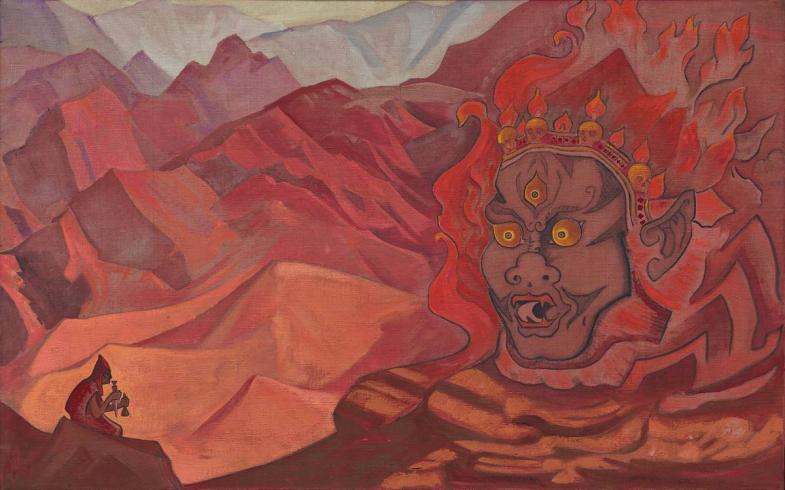The painting became part of the series "The Banners of the East" and, according to the artist, it depicts "Dorje, who dared to come face to face with Mahakala himself". Apparently, N. Roerich refers to the legend of one of the Kagyu Pin hierarchs – Dorje, who practiced in concentration on the face of Mahakala, the angry incarnation of the lord of compassion – Avalokiteshvara. In the painting, the artist not only depicts the Buddhist practice itself, but also "shows where and when images of symbols had been created". "The nature desperately dictated the epic and all its rich attributes. It is necessary to show how image forms blends with the mountain environment. These forms, which are artificial in the West, become alive and convincing here. Sometime, you are waiting for the appearance of Guanyin, sometime the destructive element is ready for Lhamo, or the face of Mahakala can come out of the cliff rock". The artist wrote this words in Ladakh, where the fire sandstone formations show all kinds of images, including threatening, to an attentive observer. "In the mountains, you can hear "Forging the Sword" and "The Cry of the Valkyries", and "The Spell of Fire", and "The Growl of Fafnir"". N.K. Roerich Believes that the mountains awaken a "heroic realism" in the mankind, and "these harmonies of feat cannot be destroyed".
(N. Roerich. Altai – Himalayas).


